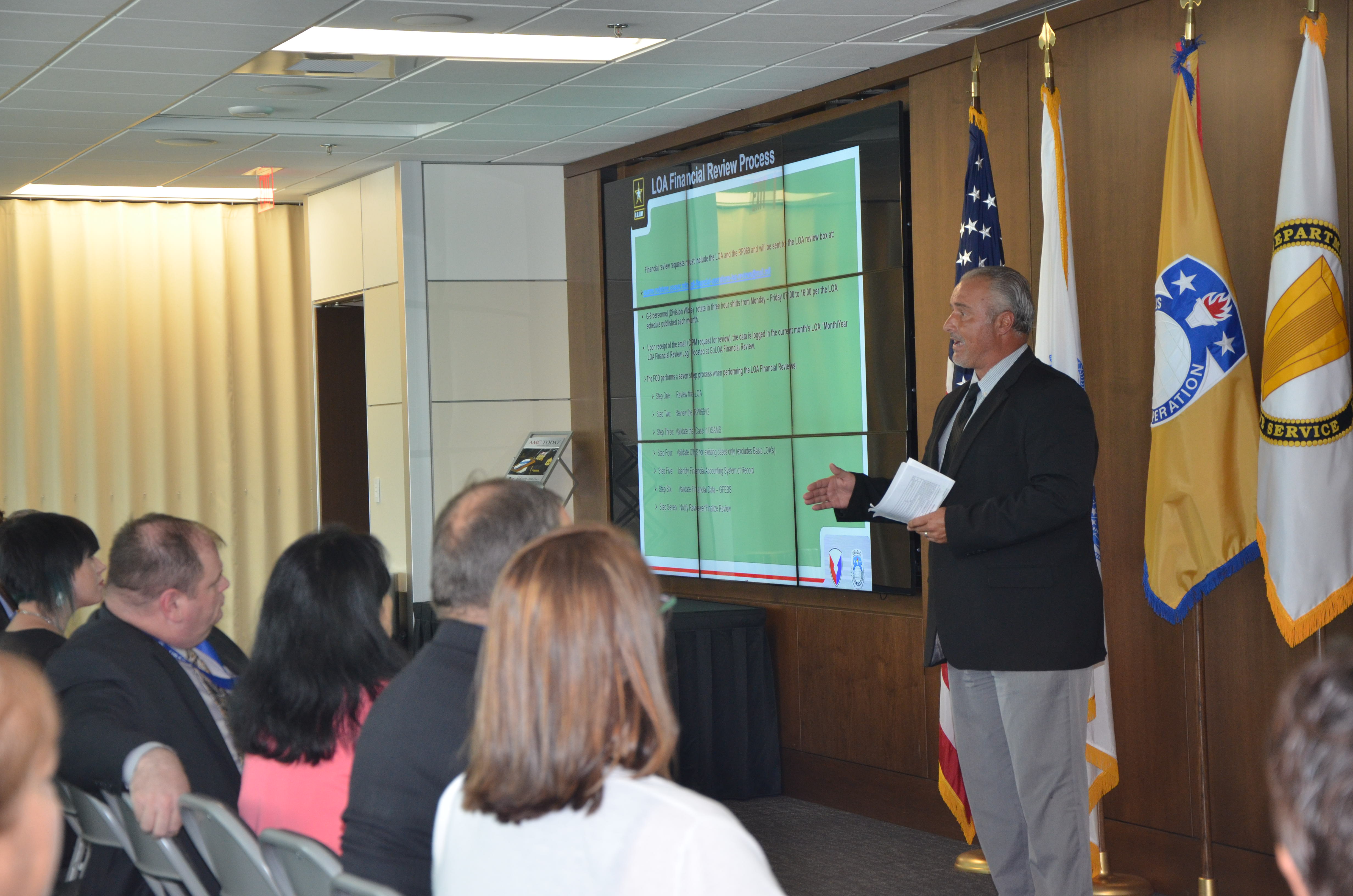
USASAC’s Resource Management Directorate ensures that foreign military sales funds are audit-ready.
by Debra Valine
A lot of work goes on behind the scenes to ensure that allies and partners get the most for their money when making a purchase through foreign military sales. The U.S. Army Security Assistance Command’s (USASAC) Resource Management Directorate ensures that the money is handled properly.
Sales of U.S. arms, defense equipment, defense services and military training to foreign governments support Army readiness by building capacity for allies and partners. USASAC is the Army proponent for foreign military sales and has fiscal responsibility for more than $190 billion.
In FY18, USASAC executed $22 billion in new business, and every penny of that will be tracked and reported to the customer on a quarterly basis. Properly managing and accounting for the funds strengthens and builds trust. Just like the Internal Revenue Service audits tax returns, the Army Audit Agency will audit FMS cases to ensure that the money provided by foreign governments is properly handled from start to finish.
That’s where the Financial Operations Division at Redstone Arsenal, Alabama, part of USASAC’s Resource Management Directorate, comes in. The Financial Operations Division manages the funds from foreign governments in an audit-ready status at all times.
The division’s staff—25 professional accountants and financial management specialists—work with the Army Security Assistance Enterprise from the start of each FMS case through closure, making sure that funds are allocated properly and checking for audit compliance. The division’s three branches—Funds Support Branch, Case Management Branch and Funds Control Branch—process an average of 95,000 actions per year. (The Resource Management Directorate also has a Financial Operations Division at New Cumberland, Pennsylvania.)
Case writing is used to develop FMS case specifics such as delivery times, and is based on a country’s formal letter of request for materiel or services. Once the case is developed, it is sent to the Defense Security Cooperation Agency for review. It is essential that the return rate be kept low to ensure that the timelines for requests are met.
Each fiscal year, the Funds Control Branch processes approximately 10,000 to 20,000 transactions to distribute, adjust and return funds for the life cycle management commands, program executive offices and project managers. “On average, the Funds Control Branch will manage anywhere from $14 billion to $25 billion each fiscal year, which supports an average of 1,500 to 3,000 FMS cases,” Wakefield said. “These efforts include providing financial management for building partner capacity cases,” a term that refers to a broad set of missions, programs, activities and authorities intended to improve the ability of other nations to achieve the security goals they share with the United States.
The branch also processes an average of 4,000 to 6,000 billing actions each fiscal year, Wakefield said. “This can be approximately $5.5 billion to $15 billion in transactions per year.”
The Funds Support Branch has four dedicated accountants that provide cradle-to-grave support for the Saudi Arabia Land Forces, the Saudi Arabia National Guard, Egypt, and the United Kingdom. On average, the branch reviews and reconciles 45,000 to 55,000 actions every year. “These accountants also provide support at the program management reviews for the dedicated countries,” Wakefield said.
He added that the accountants and financial specialists in this branch provide approximately 300 to 1,000 system-generated reports to the Army Security Assistance Enterprise and process 10,000 to 20,000 service delivery billings through the Defense Financial Accounting Service per fiscal year.
All financial transactions are part of a quarterly report that is provided to the customer. This transparency furthers the trust with allies and partners by showing how the money is being spent and accounted for throughout the process. “We make sure everything is audit-compliant and will field a quality product to our FMS customers,” Wakefield said. “With the billions of dollars we touch day in and day out, we are also looking for residual funds.” Any excess funds for a particular case are returned to the customer, he added, who can then use them for new business within the Army Security Assistance Enterprise.
“We are truly a customer service-oriented division,” Wakefield said. “We provide outstanding financial management support from cradle to grave for the majority of the [Army Security Assistance Enterprise], which includes the Army Materiel Command’s life cycle management commands. FOD acts as the chief financial officer for the country program managers, central case managers, the security assistance management directorates and all supporting program executive officers and project managers.”
DEBRA VALINE is a public affairs specialist with PROJECTXYZ Inc., working in USASAC’s Public Affairs and Command Information Office at Redstone Arsenal. Previously, she was chief of public affairs for the U.S. Army Engineering and Support Center in Huntsville. She holds a B.S. in psychology from the University of Maryland University College.
This article is published in the April-May 2019 issue of Army AL&T magazine.
Subscribe to Army AL&T News – the premier online news source for the Army Acquisition Workforce.
![]() Subscribe
Subscribe







